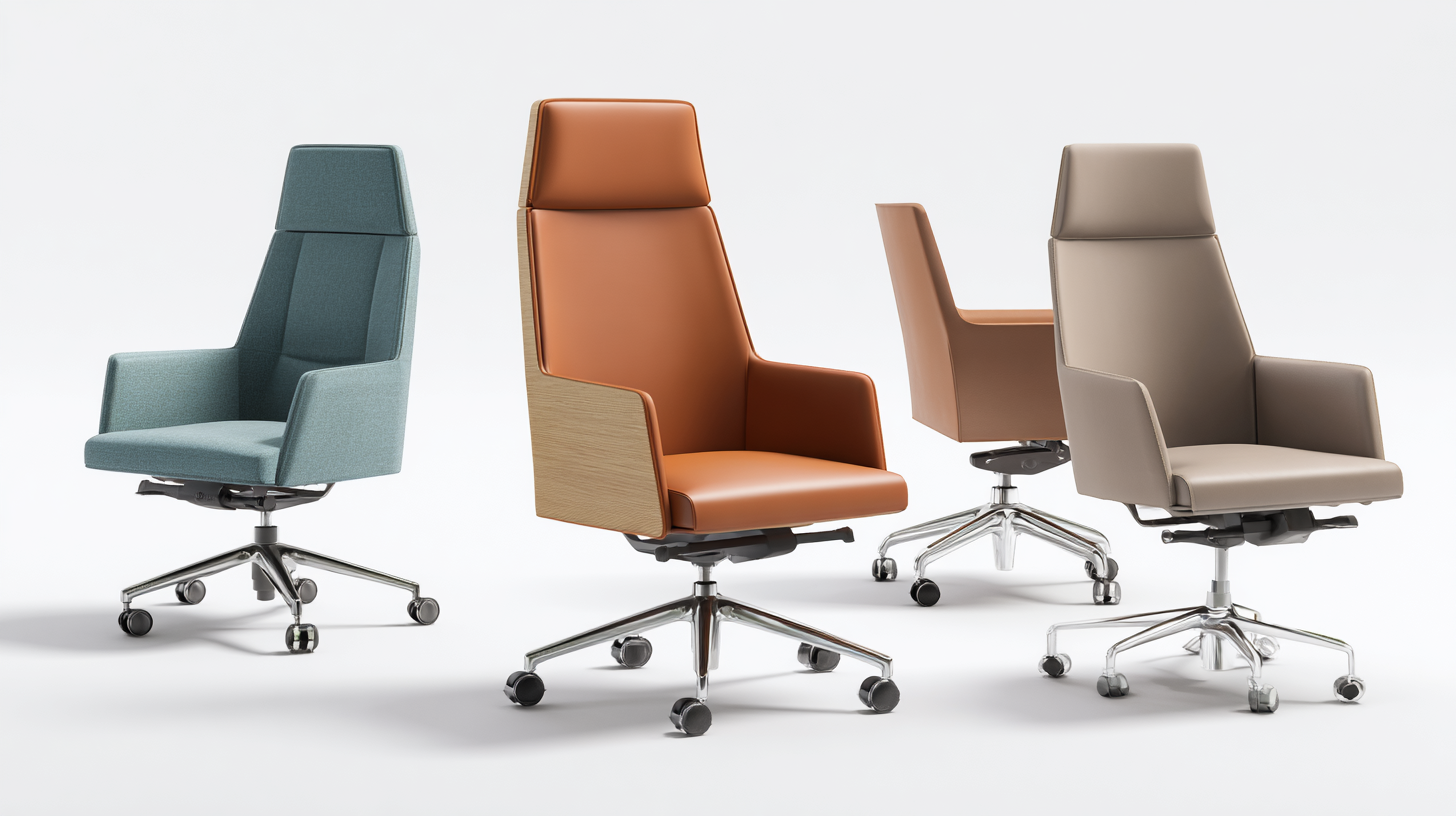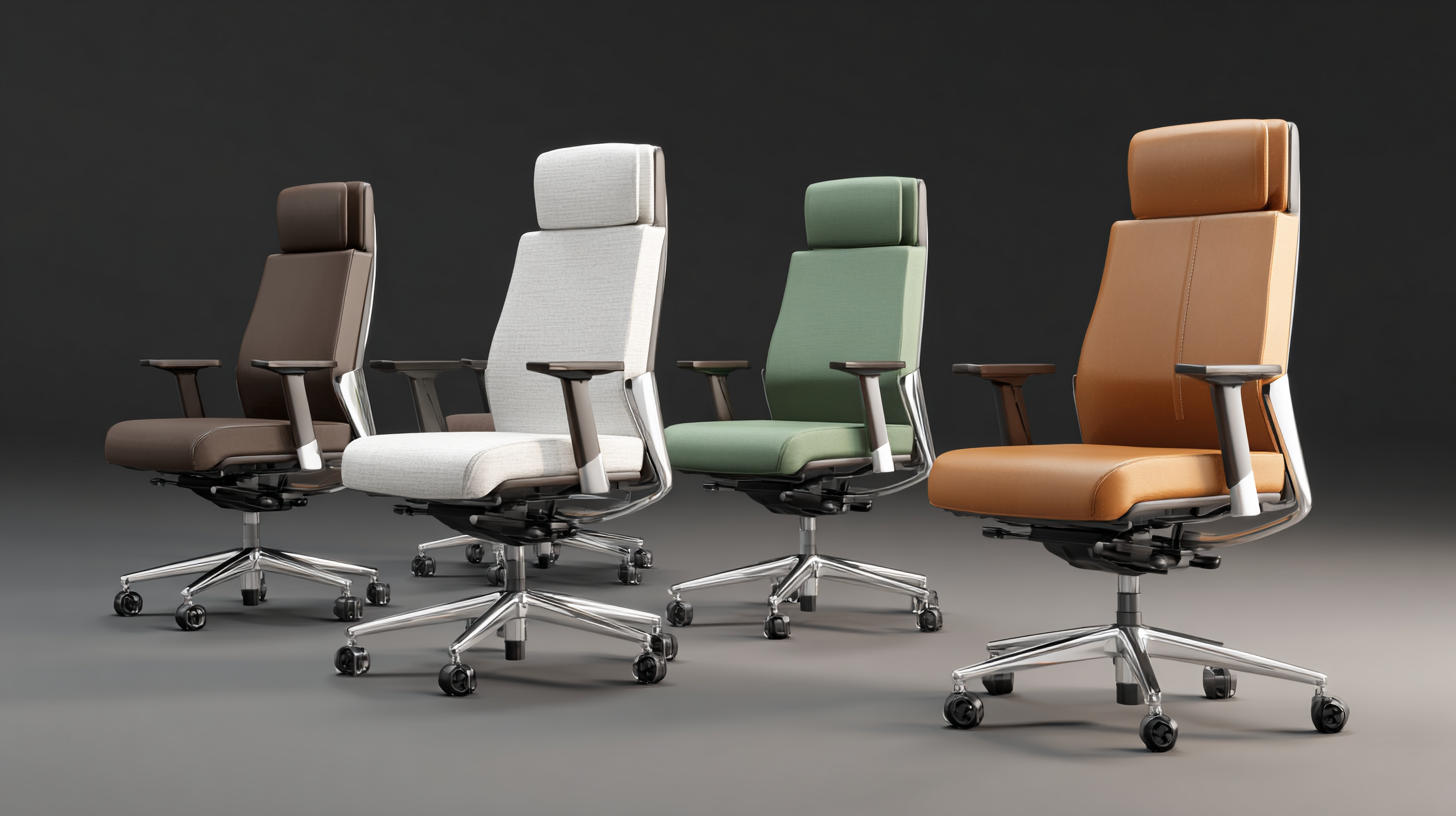Discover the Benefits of Ergonomic Office Armchairs for Enhanced Productivity and Comfort
In today's fast-paced work environments, the significance of an ergonomic office armchair cannot be overstated, particularly when it comes to enhancing productivity and comfort. Research by the Occupational Safety and Health Administration (OSHA) indicates that ergonomic interventions can lead to a 25% productivity increase and a 50% reduction in musculoskeletal disorders among employees. As professionals spend an average of 1,700 hours a year seated at their desks, the right office armchair becomes vital to not only support proper posture but also reduce discomfort and fatigue. The Global Wellness Institute confirms that investing in ergonomic furniture can significantly improve employee well-being, ultimately translating to reduced absenteeism and higher job satisfaction. By prioritizing ergonomic designs, organizations can cultivate a healthier workplace that fosters greater engagement and efficiency, making the case for choosing the right office armchair more compelling than ever.

How to Choose the Right Ergonomic Armchair for Your Workspace Needs
When selecting the right ergonomic armchair for your workspace, it is essential to consider factors that enhance both productivity and comfort. According to recent market research, the global ergonomic chair market reached a value of approximately $56.69 billion in 2022, reflecting the growing demand for comfortable seating that promotes good posture and reduces fatigue during long working hours. As remote work becomes the norm, investing in an ergonomic chair becomes even more critical for maintaining focus and efficiency.
One of the most effective ways to increase workplace comfort is by opting for adjustable features in an ergonomic chair. Look for chairs that offer customizable height, tilt, and lumbar support to accommodate varying body types and preferences. A recent trend in office equipment is the rise of sit-stand workstations, which allow users to alternate between sitting and standing throughout the day, helping to mitigate the risks associated with prolonged sitting. This shift has coincided with an anticipated compound annual growth rate of $5.5% for the seating cushion and chair seat cushion market from 2024 to 2030, indicating a robust market for products aimed at enhancing comfort during work.
How to Adjust Your Ergonomic Armchair for Maximum Comfort and Support
When it comes to enhancing productivity and comfort in the workplace, adjusting your ergonomic armchair is crucial. A report by the Occupational Safety and Health Administration (OSHA) states that proper seating can improve employee efficiency by up to 24%. To achieve the right fit, ensure that your chair height allows your feet to rest flat on the floor. This positioning helps maintain proper circulation and reduces fatigue during long work hours.
Tips: When adjusting your chair, take a moment to align the backrest with the natural curve of your spine. A study from the American Chiropractic Association indicates that lumbar support is essential to prevent back pain, which affects nearly 80% of adults at some point. Additionally, the armrests of your chair should allow your arms to rest comfortably at a 90-degree angle, promoting relaxation and reducing strain on your upper body.
Lastly, don't overlook the importance of seat depth adjustment. A chair with the correct depth ensures that there is a couple of inches of space between the back of your knees and the seat edge. According to research from the Human Factors and Ergonomics Society, adequate seat depth significantly reduces pressure on the thighs, enhancing overall comfort and focus—key elements for boosting workplace productivity.
How to Maintain Proper Posture While Using an Ergonomic Armchair
Maintaining proper posture while using an ergonomic armchair is essential for maximizing comfort and productivity.
An ergonomic armchair is designed to support the natural curve of your spine, which reduces strain on your muscles and joints.
However, it's crucial to adjust the chair to fit your individual body shape and workspace. Ensure that your feet are flat on the floor, your knees are at a 90-degree angle, and your back is fully supported by the chair's contours.
Tips: To further enhance your posture, consider using a footrest if your feet do not reach the floor comfortably. This ensures your legs are positioned correctly while providing additional support.
Additionally, remember to keep your monitor at eye level to prevent neck strain.
Taking regular breaks is also vital; standing up and stretching every 30 to 60 minutes can alleviate any tension that builds up during long periods of sitting.
Adjust your chair height and backrest throughout the day as needed to maintain optimal posture and stay relaxed while working.

How to Integrate an Ergonomic Armchair Into Your Daily Work Routine
Integrating an ergonomic office armchair into your daily work routine can significantly enhance both productivity and comfort. One key aspect is ensuring that the chair is properly adjusted to fit your body. Take the time to set the height so that your feet are flat on the ground, and your knees are at a 90-degree angle. Adjust the backrest to provide adequate lumbar support, promoting good posture throughout your workday.
Tips: Remember to take short breaks every hour to stand up, stretch, and reset your posture. This will help prevent stiffness and maintain blood circulation, keeping you energized. Additionally, consider placing your armchair close to your desk to encourage proper alignment while typing, reducing the risk of strain.
Another essential factor is to create a designated workspace where your ergonomic armchair is complemented by other tools like an adjustable desk and monitor. This setup promotes a better workflow, maximizing comfort. Make it a routine to check your workspace arrangement regularly to ensure that everything is at the right height and distance, further contributing to a healthier work environment.
How to Transition from Traditional Chairs to Ergonomic Solutions for Improved Health
Transitioning from traditional chairs to
ergonomic office armchairs
can significantly enhance both health
and productivity. Traditional office chairs often lack adjustable features and proper lumbar support, leading to discomfort and strain during long working hours. To make the shift, it's essential to first evaluate the specific needs of your workspace and ensure that ergonomic chairs offer multiple adjustments—including seat height, backrest angle, and armrest position—to accommodate different body types and preferences.
Begin the transition by gradually introducing ergonomic solutions into your office environment. Encourage employees to test various models to find their ideal fit. Offer workshops or training sessions about proper posture and the benefits of using ergonomic designs. This hands-on experience will help individuals understand how to adjust their chairs effectively, promoting better ergonomics and reducing the risk of musculoskeletal issues. By fostering a culture that values comfort and health, organizations can pave the way for improved focus and productivity, making the shift to ergonomic office armchairs worthwhile for everyone involved.

Related Posts
-

7 Best Ergo Office Chairs for Ultimate Comfort and Productivity
-

Discover How China's Top Quality Factories Redefine Global Standards for Best Leather Executive Chairs
-

Understanding the Benefits of Upholstered Office Chair for Your Workspace
-

Essential Office Chair Checklist: Key Features for Your Perfect Workspace
-

Solutions for Ergonomic Office Seating Chairs That Boost Workplace Comfort & Productivity
-

How to Choose the Perfect Office Work Chair for Your Needs